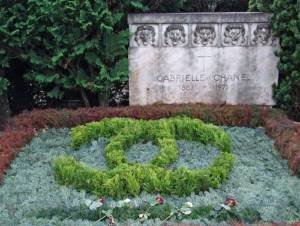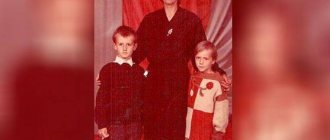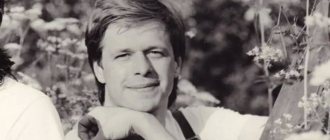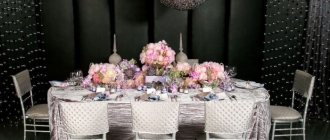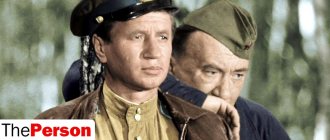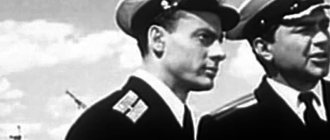Coco Chanel is an outstanding female fashion designer, founder of a fashion house, who proved that elegance is impossible without convenience. Her designer imagination includes a little black dress, a women's trouser suit, a handbag on a chain and other signature items that create a sophisticated style.
Chanel No. 5 perfume is a top seller, and the Time publishing house includes the name of the Great Mademoiselle in the hundred most influential people in the fashion industry. What life story is hidden behind the brand, whose logo - two crossed letters "C" - is known throughout the world? The biography of Coco Chanel will tell you about this.
Childhood and youth in the monastery
Gabrielle Bonheur Chanel was born on August 19, 1883 in the French town of Saumur. The girl was born under the zodiac sign “Leo”; subsequently she will decorate her interior with figures of the king of beasts and use the “lion” motif in the fittings.
Leos are characterized by a desire for success, but was it easy to achieve?
Gabrielle's childhood was difficult; she can be classified as a self-made person despite the circumstances.
Gabrielle remembered her mother Jeanne poorly, or, as she admitted in her memoirs, she did not want to remember. 19-year-old Jeanne fell in love with Albert, Gabrielle's father, and became pregnant. The guy ran away, the fugitive was found months later: Albert worked as a fair trader and did not sit in one place for a long time. Zhanna came to her grief-lover and gave birth the next day.
When she became pregnant again three months later, her partner advised her to “go to work.” A young woman with a baby in her arms wandered from house to house, offering help with housework.
The birth of the second child, Gabriel, did not lead to the parents’ wedding; 5,000 francs, Jeanne’s dowry, helped to legitimize the relationship. Gabrielle has a younger sister and brothers, but her mother, out of blind passion for her husband, pays little attention to the children.
Gabrielle has more pleasant memories with her father; his appearance in the family was awaited like a holiday. Gabrielle claimed that her father was handsome and inherited his appearance: a white-toothed smile, eyes with a cheerful sparkle and thick hair.
After the death of his wife at the age of 33, Albert gives his sons Alphonse and Lucien to work as farm laborers, and entrusts his daughters to the care of the sisters of the Aubazine monastery. Gabriela was 13 years old and never saw her father again.
My loneliness made me a strong personality Coco Chanel
HOUSE OF GOOD
In Aubazine, Gabrielle lived a sad life, numerous prohibitions weighed heavily on the young rebel: she had to wake up, fall asleep and start eating at the command of the nurse on duty. The years in the orphanage left a deep imprint on her worldview.
Many years later, Chanel will order her architect to repeat in her house the stone staircase from the monastery, along which she was forbidden to run as a child: at least in her villa she will walk as she wishes!
Gabrielle had the status of an “orphan” with a large number of relatives: her paternal grandparents gave birth to 19 children! This is a documented fact: only the grandfather and aunt Louise took the girl to stay with them during the holidays.
Gabriela calls Aunt Andrienne, her father's younger sister, "sister" because of the small age difference. She was also in Aubazine, and common romantic dreams of a rich groom and freedom unite the girls. When they decide to marry Andrienne to an old notary, Gabriela persuades her to flee the monastery.
The money doesn’t last long and the unlucky runaways return. They are quickly assigned to another “high security” institution - the boarding house of the Institute of Our Lady of the city of Moulins. Gabriel stays there for two years, from 18 to 20 years old. Recalling these years, Chanel will say in an interview that she “did her time,” and when asked by a surprised journalist “for what,” she will clarify – “for dissent.”
The boarding school graduates had to be ready for independent life, so they were taught sewing. These skills will be useful to the future clothing designer.
Biography of Coco Chanel
Gabrielle Bonniere Chanel was born on August 19, 1883. in the town of Saumur, located on the left bank of the Loire River. Her father, Albert, is an outpatient merchant and a freedom-loving soul. Her mother, Jean Duval, worked as a laundress. Gabrielle was the second of five children, and at the time of her birth, her parents had not yet married. The documents themselves surrounding her birth are contradictory and contain technical errors, since at that time no one was going to register the birth of a little girl.
After the birth of their second child, Albert and Jean finally got married. During their life together, they had three girls - Antoinette, Gabriel and Julia, as well as two boys - Alphonse and Lucien.
Coco Chanel in childhood
Almost nothing is known about Gabrielle's early life. She herself rejected any attempts by journalists and biographers to obtain more detailed information. Usually Gabrielle would wave her hand and say that nothing interesting had happened. When she shared even a little meager information, she usually mixed reality and fiction.
They lived very poorly, and Gabrielle felt unhappy. Chanel remembered her mother with regret, noting that she had wasted her life on the man she loved.
When Gabrielle was 12 years old, her mother Jean Duval died of tuberculosis. At this difficult moment for the family, her father, Albert, leaves them. Two boys were sent to work for another family, and three girls were sent to an orphanage in Obazine. From time to time they also took refuge with their aunts, who treated them extremely coldly.
In some of her memoirs, Gabrielle sometimes described how her father did not leave them, but simply went to seek his fortune in America. In other cases, she justifies her father's action, identifying herself with his desire for freedom, and is convinced that in a similar situation she would have done the same.
In general, the first 18 years of Gabrielle Bonniere Chanel's life passed without family comfort, love and warmth.
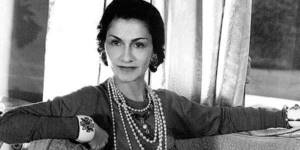
What Gabrielle gained from her difficult youth was that, while in an orphanage, she received her first lessons in needlework and sewing. Subsequently, it was they who caused fundamental changes in her life.
Youth and Etienne Balsan
After boarding, Gabriel and Andrienne work for the Grampers in a store that sells dowries for brides. The girl also does minor repairs to the dresses of society ladies: she sews on frills and sharpens lace.
Is it then that Gabrielle develops a distaste for floral perfumes, which she will remember when creating her own scent? After all, wealthy ladies did not like to wash, and in order to get rid of the emanating amber, they generously doused themselves with floral perfumes.
Gabriel decides to crack the code of fate and change his field of activity.
If you want to have something you've never had, you'll have to do something you've never done Coco Chanel
The girl wonders what fame can bring her? Moulins was a garrison town in which the 10th Cavalry Chasseur Regiment was quartered. In the Rotunda cafe, watching the singers, Gabrielle decides that she sings no worse than them, and tells the director of the establishment that she is ready to sign a contract!
The effect of surprise and self-confidence provide the girl with what she wants. After the church hymns, Gabriel easily copes with the operetta verses, and his cavalry acquaintances do not skimp on applause.
Her “rooster” couplets, with the chorus “ko-ko-ri-ko,” are very popular among the local military. Calling the girl for an encore, the audience chants “ko-ko”. This nickname will become her pseudonym.
Gabriela's success evokes caustic remarks from her rival colleagues; she is teased as “the starving woman from India” for her boyish figure.
Only nonentities have no envious people. It's better to be first than to be second. Coco Chanel
CITY LIGHTS
The popularity of the singer of the garrison Moulin is not enough for Gabriela. Her friend Etienne Balsan, the son of an industrialist and a passionate fan of horse racing, lends the girl money.
So in 1905 she sets off to conquer the mineral water city of Vichy. By pouring water for holidaymakers, Gabriel raises money for vocal lessons. But the classes do not help her get an engagement, and she returns to Moulins.
Will you really have to pick up sewing needles and threads again to make money? But life confronts her with another, more difficult choice.
In the biography of Chanel by Guidel Henri, this event is not mentioned, but Gabrielle herself in the autobiographical book “Coco Chanel. The Life Told by Herself is more frank.
From the resort town, in addition to disappointments, she brings back an unplanned pregnancy. The girl is terrified of repeating her mother’s path. Convinced that giving birth to a child in her situation is tantamount to death, Gabrielle chooses life: “If I had not done this, there would be no Coco Chanel.”
HORSES, PEOPLE, HATS MIXED
22-year-old Gabrielle begins a new story - living together with Etienne Balsan. The girl asks to go to his estate in Royeaux as a student, Balsan takes her with him and teaches her horse riding on the estate. But not only that: the girl becomes his convenient backup lover. Chanel herself does not consider herself a Balsan cocotte, because she does not take money or gifts.
One day, Balsana's kept woman Emilienne d'Alençon, who was visiting Royeaux, asks Coco to remake her hat - just as she remade it for herself. Soon, all of Balsan's friends are wearing hats modified by Coco.
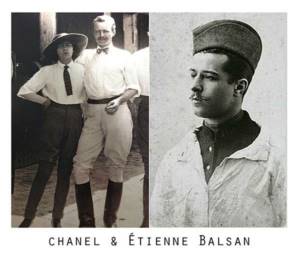
Chanel strives for independence from men, and the success of avant-garde hats prompts the young milliner with the idea of her own store. Coco receives Balsan's permission to take over his Parisian apartment and continues his design experiments there.
Chanel opened her first store in the capital in 1910 at 21 rue Cambon; within a year she moved to house no. 31 on the same street. There is still a Chanel store there, opposite the Ritz Hotel.
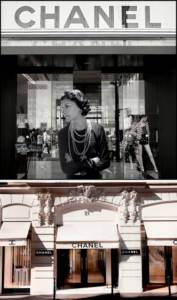
Gabrielle Coco Chanel
When Gabrielle turned 18, she left the convent and went to Paris. There, she first worked as a saleswoman in a store, and then as a cabaret singer in the Rotunda cafe, where cavalry officers often stayed. During her short musical career, Gabrielle adopted the stage name “Coco”, taken from one of the songs she loved to perform, “Qui Qu'a Vu Coco?” (“Who saw, Coco”).
Lovers Coco
At this time, she begins relationships with various rich men. Among them are wealthy womanizers Etienne Balsan and Arthur “Boy” Capel. Soon Coco lives with Balzan in his chateau. He pampers her with a luxurious lifestyle, receptions, expensive jewelry and dresses.
Later she meets the love of her life - the Englishman Arthur Kappel, however, who introduces Gabrielle to various theologies and literature. They became lovers and lived together in Paris. She said about Arthur: “he was my father, my brother, my family.”
Their romantic relationship developed very rapidly. Arthur Kappel enjoyed special attention from the ladies. He cheated on her many times while they were together, but Coco claimed that it didn't bother her. Their relationship lasted 9 years, even when he got married. It all ended in 1919 with the death of Arthur Kappel in a car accident.
The loss of a loved one is one of the most difficult moments in Coco's life. Years later, she recalled that “with the loss, Capella lost everything.” Although she had many relationships after this, including with women, she never married, nor did she have such strong feelings for anyone else.
Despite the fact that she was not deprived of male attention and rich lovers, Coco always preferred to be self-sufficient and earn her own living.
Coco Chanel hats
Her passion for fashion began with making hats. She initially made them in Balsan's Parisian apartment, with her other lovers being her first clients. In 1910. She acquires a license for a hat workshop and, thanks to the financial support of both Balsan and Cappel, opens her first boutique on rue Cambon in Paris.
Due to high rents three years later, she had to move her business to Deauville. At this time, she did not have the right to sew clothes, since she did not have the necessary license. But Coco found a solution by starting to create clothes from jersey, a fabric that until then had been used mainly for men's underwear and clothing for the poor.
Arthur Capel and the resort business
In 1909, in Spain, Chanel meets an English soldier, Arthur Capel, whom everyone calls Boy. The green-eyed brunette captivates Gabrielle at first sight.

He not only financially supports her cause, but also helps Chanel to reveal herself as a person. Boy invites the girl to expand her business in the seaside resort of Deauville, where Chanel opens a boutique in 1913.
DAUVILLE
Coco watches with regret the “poor rich women”: because of the ridiculous outfits, resort girls are unable to ride horses in a man’s saddle, drive a car, play tennis and other active recreation.
The corseted “prisoners” slowly parade under sun umbrellas and are drenched in sweat. Fashion catalogs of that period dictate mandatory wardrobe elements: huge hats with veils, lush bustles, tight corsets, long trains.
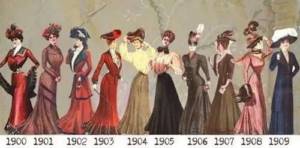
According to Chanel, elegance without convenience is impossible! She begins not to dress, but to undress women. Her clothes prioritize comfort. More and more ladies are walking around Deauville in simple hats that can be taken off and put on independently - “in complete disgrace,” as authoritative fashion designer Paul Poiret calls the newfangled hats.
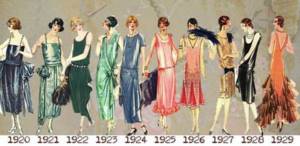
The First World War that came to France is reflected in the resort of Deauville; vacationers are leaving, boutique owners are boarding up their shutters. But Gabriel does not close the studio. But what kind of fashion can there be in wartime? Still the same – comfortable Chanel fashion.
The city is filled with visitors: aristocrats come from front-line estates, a military hospital appears. The designer's opinions about the simplicity and functionality of clothing appeal to the ladies helping in the infirmary: it is impossible to care for the wounded in corsets and hats! Things are looking up. The next city to fall into Mademoiselle Coco's stylish shoes is Biarritz.
BIARRITZ
In Biarritz, a luxury spa resort, Boy helps rent a villa for a new atelier. There are hundreds of dressmakers working for Chanel, and the total number of workers, including boutiques in Deauville and Paris, reaches 300!
Mademoiselle Chanel makes high demands on her employees, getting rid of lazy people and defectors. Chanel's products are of excellent quality and are not cheap. When Boy asks why it is SO expensive, Gabrielle, who had entrepreneurial foresight, answers - so that they take it seriously.
Chanel does not draw preliminary sketches of models; instead of patterns, she outlines the silhouette with pins and cuts off excess fabric directly on the model.
The first publication of her model appears in Harper's Bazaar magazine - a dress without a waist, with a scarf tied at the hips and a vest in the style of a man.
ROTHSCHILDS - THE BEST ADVERTISING
In Paris, Chanel becomes truly popular in just a week - so says the legend. One day, a lady who was dressed by fashion designer Poiret quarrels with him and decides to go over to Coco Chanel.
The lady's name is Baroness Diana de Rothschild. Having bought a dozen dresses, the new client recommends the couturier to her relatives, and they quickly make Chanel famous. Money flows like a river.
Coco settles accounts with Boy: he returns every franc invested in the business. Arthur Capel is surprised: he thought he was giving Gabrielle a toy, but it turned out to be freedom.
I SEWED IT FROM WHAT WAS
Coco also shows her business acumen when textile raw materials run out in warehouses due to military operations. At the beginning of 1916 there was nothing to sew from!
Do not consider jersey fabric, which is traditionally used in the production of men's long johns, as a fabric! But the designer buys all the rolls of material and begins to work on new styles.
Jersey presents Chanel with “surprises”: the dense knitted fabric does not wrinkle, does not emphasize the curves of the figure, and hinders movement.
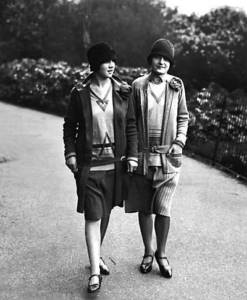
The fashion rule breaker eliminates folds, stops emphasizing the waist and shortens her skirts so that you can see her calves!
Boy jokingly begs Coco not to expose the young ladies’ knees, because men will start grabbing them “even in restaurants.”
I WILL NOT GIVE UP WITHOUT FIGHT
Class prejudices flourished in those times. Chanel notices that Boy is ashamed of her. And this is when magazines devote laudatory articles to her, and famous clients crowd the boutiques!
As a sign of protest (Boy likes her luxurious long hair), Chanel cuts off her curls. Her appearance in the theater with a boyish hairstyle creates a sensation. The haircut a la garçon is gaining popularity, harmoniously complementing the practical “Chanel” look.
The worse a girl does, the better she should look Coco Chanel
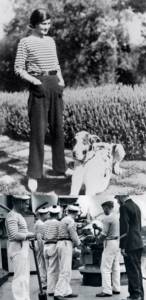
Chanel finds out that she is expecting a child, but does not have time to tell Arthur about it. Ambitious Boy proposes to the lord's daughter and surprises Coco with information about the wedding.
Chanel later asked what would have changed if she had been the first to tell her news? But her mother’s example convinced her that a man should not be tied down as a child. Coco is not destined to become a mother this time either. The 9-year romance ends tragically; in December 1919, Arthur Capel dies in a car accident.
Singer, dancer or designer
Despite the fact that the girl became more or less famous in narrow circles, Coco Chanel’s success story was not as colorful as she wanted. Trying to become famous and influential, the girl knocked on various castings, trying to try herself as not only a singer, but also a dancer, ballerina, and actress. However, the girl’s talent seemed not enough for the stage to accept her with open arms.
Young Coco always knew what she wanted. And therefore, having mastered the basics of sewing during her stay in the monastery, Gabrielle Bonheur Chanel began to sew hats for rich Parisian women. Yes, by the way, in those years Coco Chanel was already living in Paris with her common-law husband, Etienne Balsan, heir to a huge fortune.
Although Gabrielle lived in luxury and could not deny herself anything, such a life was not for her. Actually, that’s why the girl, at the age of 22, became interested in sewing ladies’ hats.
We recommend: Biography of Joan of Arc
In 1909, Coco Chanel, whose life story is full of ups and downs, finally opens her own hat workshop - right in the apartment where she lived with Etienne. The interesting facts that became known about this kind of creativity of dear Coco even then captured a large queue of rich ladies who wanted to purchase the designer’s headdress.
But Coco Chanel considered her small workshop only as an intermediate point on the path to great fame, for which she needed a lot of money.
Coco Chanel described men as “fashion accessories for beautiful women.” And since she herself was one of the most beautiful French women, she was constantly surrounded by rich and influential men. Among all her admirers, she chose Arthur Kepel. He helped her with solving the money issue and became more than just a sponsor for Coco Chanel.
The influential and generous English industrialist Arthur greatly contributed to the fact that all of Paris learned about the designer of ladies' hats. So, in 1910, Coco Chanel opened her own store on one of the streets of Paris. According to Wikipedia, it is still there, across the street from the Hotel Ritz, at 31 rue Cambon.
Meeting the creative elite and patronage of the arts
Coco is brought out of her depression by meeting Sert, a Catalan decorative artist, and his wife Misya. The friendship with this woman will last more than 20 years; Gabriel admits that without her she would have died “a complete idiot.”
The serts introduce Chanel to the highest circles of the creative elite, she has the chance to watch the birth of brilliant paintings and poems. Chanel meets artists Pablo Picasso and Salvador Dali, playwright Jean Cocteau, and poet Pierre Reverdy.
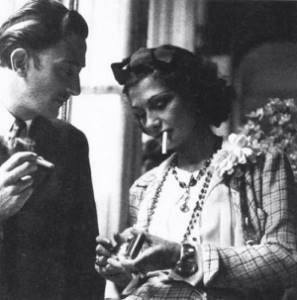
Misya introduces Coco to Serge Diaghilev, the organizer of the ballet “Russian Seasons”. Backstage at the ballet, Chanel watches the dancers give their best in every practice. Coco learned to work from the Russians - this is her own recognition of someone who herself deserves the title “workaholic”!
Chanel supports cultural projects and helps creative people. For the production of “The Rite of Spring”, she gives Diaghilev 300,000 francs, invites composer Igor Stravinsky and his family to live in her villa, arranging “full board” for his wife and four children. Patronage inspires Chanel: in the recent past, a poor orphan, now she makes a contribution to art!
The designer extends the influence of Russian culture to his professional activities: he opens a recruitment in the atelier for Russian emigrants who knew handicrafts, opens a workshop for hand embroidery, and introduces Slavic motifs into models.
She cannot do without an affair with a Russian: Prince Dmitry Pavlovich becomes her new dear friend. Nicholas II's cousin is 8 years younger than her, handsome and poor. He supports Chanel morally, she supports him with her wallet.
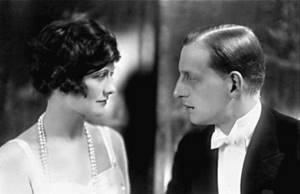
When Dmitry leaves for America a year later, the couple maintains friendly feelings. Chanel calls the prince “the genius of useful acquaintances,” and it is he who introduces her to the creator of her own fragrance, perfumer Bo.
Life under occupation
At the same time, she met Hans Gunther von Dinklage, a German officer and Nazi spy, a bit of a playboy, who was 13 years younger than her. Coco agreed to have dinner with him to ask for help in freeing her nephew, who was detained by the Germans. After that meeting they became lovers; at that time she was 56 years old. Hans Gunther was German, but this apparently did not bother her, she would later say; “A woman my age won’t look at a man’s passport if she has a chance of getting a lover.”
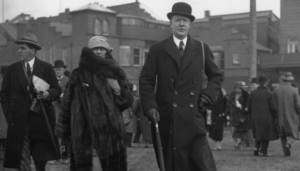
Duke of Westminster and Coco Chanel
Due to connections in high Nazi circles, Coco found herself drawn into a dangerous game. One day, Coco and Hans were having dinner with a high-ranking officer, discussing the coming horrors of war and wondering if Coco could help them. After all, she mentioned the Duke of Westminster in conversations and communicated with Churchill. She was the mistress of an Englishman for 8 years, knew the English mentality and had influential friends.
“You Germans don’t know how to treat the British, but I do.”
Coco couldn't imagine what she was getting into, so she went to Berlin and was introduced to Walter Schellenberg, Hitler's head of foreign intelligence and Heinrich Himmler's personal assistant. At that time, Schellenberg was convinced that the Nazis would lose the war and passionately wanted to reach an agreement with the Allies and conclude a decent peace.
Chanel No. 5 and a little black dress
The new woman in Chanel clothes could not smell like the old one, violet, rose or hydrangea: I really love the smell of rose oil, but a woman who smells only of it is completely mediocre.
Ernest Bo, who previously worked at the royal court in St. Petersburg, experiments with a palette of scents and achieves a new shade of notes using aldehydes. Chanel likes perfume samples.
To produce them on an industrial scale, she begins to collaborate with the Wertheimer brothers. It is created in which the fashion designer contributes a recipe and name and receives 10% of the shares. She will later regret this distribution; the Wertheimers will register new companies as dummies and will hide sales volumes.
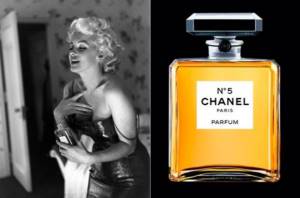
On May 5, 1921, Chanel No. 5 is presented to the public.
– Where should perfume be applied?
“Where you want to be kissed,”
their creator will say.
What influenced the release of a new product to become a sensation?
- Compound. Chanel No. 5 becomes the first synthesized perfume, consisting of 80 ingredients. Components that fix the scent make it possible to apply perfume in a small amount; weak floral aromas cannot stand up to competition.
- Name. Among the perfume samples, Chanel chooses a bottle with the number “5” on the label; she considers “five” lucky. Prince Dmitry persuades Chanel to add a name to the number. After the release of the perfume, pretentious names such as “Evening Intoxication” and “The Secret of Seduction” become outdated.
- Bottle. Chanel insists on a laconic form and argues for minimalism in design as follows: “decorated for everyone.” The transparent cube bottle is now on display at the Museum of Modern Art in New York.
- Advertising. Chanel did not sell the first 100 perfumes, but gave them as gifts to the most influential and beautiful women. The aroma becomes a symbol of good taste and luxury.
Marilyn Monroe also contributed to the success of the perfume, coquettishly admitting that she wears “only a couple of drops of Chanel No. 5” at night. After her announcement, millions of bottles of perfume are sold out.
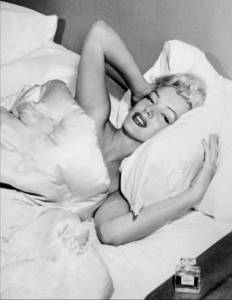
Perfume is still popular now; according to Forbes, perfume is in the TOP 8 most counterfeited items, along with Rolex watches and a 50-euro note.
In 1925, the Chanel brand name appeared on the perfume bottle. According to one version, the emblem is the initials of Coco Chanel; according to another, it is the “double horseshoe” symbol of good luck, depicted in Vrubel’s sketch.
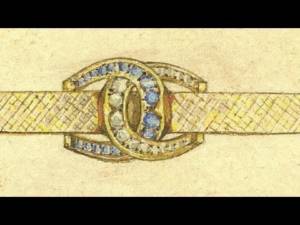
FORD CREATED BY CHANEL
The revolution in the perfume industry is followed by another challenge to society. Once, while in a theater box, Chanel was looking with her eyes for someone she knew. Contemplating the crowd, the thought comes to her about the excessive diversity of outfits: it is not the faces that catch the eye, but the colorful dresses.
Thus, in 1926, the embodiment of the idea of asceticism appeared - the little black dress. Decorated with a simple semicircular neckline, it emphasizes the figure, sets off the whiteness of the skin, and at the same time is almost invisible.
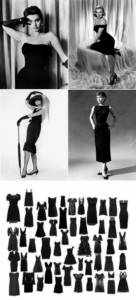
“Well-wishers” claim that the designer is forcing her clients to share her grief for Boy – previously, black was worn only in mourning. But the women liked the dress.
Without decorations, it was suitable for a business setting, and with pearl beads, a gold bracelet or brooch it looked like an evening outfit.
You never get a second chance to make a first impression Coco Chanel
Vogue magazine in its 26th article notes that the dress “has become as popular as a Ford car!”
Coco Chanel during the war years
In the 20s, Coco began a long affair with the Duke of Westminster-Hugh Grosvenor. It was he who introduced her to the English aristocracy and Churchill himself. The famous Prime Minister was very impressed by this acquaintance and considered her one of the strongest and most intelligent women he had ever met.
The Second World War (1939-1945) found Coco Chanel at the height of her fame, but this period became a black spot in Chanel’s biography.
Despite the fact that she is closing her boutiques, Coco decided not to leave the French capital. Throughout this period, she lived at the Ritz Hotel and had relationships with high-ranking SS military personnel. Rumor has it that she even had an affair with the head of foreign policy intelligence, Walter Schellenberg.
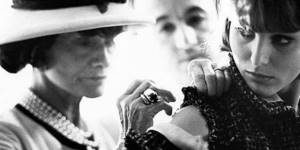
At the end of the war, Coco was arrested by the Committee of Public Morals and accused of collaboration. She was released a few hours later after the personal intervention of Winston Churchill.
Some believe that Coco worked as an agent and was a liaison between British and German intelligence. However, France has not forgiven Chanel, and she is rejected by society.
Post-war fashion
After the war, many new fashion designers begin to appear, some of whom Coco treats with ridicule. About the ladies dressed in Christian Dior's designs, she said: “Look how ridiculous women are in clothes created by a man who does not know women, has never had one, but dreams of being one.”
In the 50s, Coco Chanel returned from her “exile” in Switzerland and after 20 years of calm, in 1954, she presented a new collection of fashionable clothes. Journalists and fashion experts were shocked and outraged. However, it soon turned out that they were deeply mistaken.
Duke of Westminster
In Monte Carlo, Chanel meets the Duke of Westminster - Vendor, as he was called. He showers Coco with luxurious bouquets, personally shot game, and jewelry. Chanel is conquered, but only to the extent that she allows herself to be: she “gifts” the Duke with cufflinks worth a car’s worth!
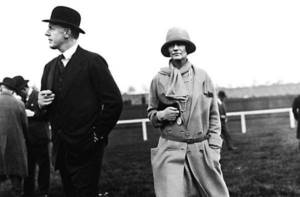
The designer spends a lot of time with Vendor at Eaton Hall Castle. Looking at servants' uniforms, Chanel gets ideas for creating women's jackets. She discovers a new fabric - soft English tweed. English tendencies can be traced in her work.
The press “marries” the beautiful couple, but Chanel understands that becoming a married “madame”, she will have to leave the Fashion House. A duchess as a dressmaker - unthinkable for that era!
When I had to choose between a man and my dresses, I chose the dresses. But I doubt that Chanel would have become known to everyone without the help of Coco Chanel
Chanel still considered the idea of marriage - if she gave the Duke an heir who would occupy a high position in society. But 46-year-old Chanel is not destined to become a mother. She refuses Vendor, because the Duke cannot be called a model of fidelity.
Once, in her presence, he invited another beauty to the yacht, and then tried to pay off Chanel with a huge emerald. Gabrielle threw the gem overboard.
MILLION DOLLAR BUSINESS
In 1931, Prince Dmitry introduced Chanel to Sam Goldwyn, the creator of American cinema. Goldwyn dreams, both in films and in life, of dressing movie stars in Chanel clothes and offers a million-dollar contract.
The designer was required to visit Hollywood twice a year and design costumes. But Gabrielle hesitates, because previously she created her own models, and did not indulge the tastes of capricious actors and actresses.
Thanks to the persuasion of her new lover, the artist Paul Iriba, Chanel signs a contract and crosses the ocean. A warm welcome awaits her there: she is provided with a white-painted train for her trip around the country, the press enthusiastically calls her “Great Mademoiselle,” and celebrities line up on the platform, led by Greta Garbo.
Although the partners do not renew the contract next year, Chanel gains invaluable experience in working for the mass consumer.
The same age as Paul Irib becomes Chanel's last hope for family happiness. But tragedy strikes again: he dies on the tennis court in front of Gabrielle.
Maybe I became the Great Mademoiselle because I have no one to feed dinner? Coco Chanel
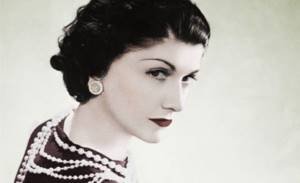
In the summer of 1936, Paris was engulfed in a strike. Workers, incited by a coalition of left-wing political parties, are demanding higher wages and union contracts.
Chanel feels betrayed - the dressmakers won't let her into her own fashion house! But she pays them well and provides them with a 2-week vacation in the summer!
An enraged Chanel has to go with her team to the world war so as not to disrupt the exhibition of the new collection.
The Second World War
With the outbreak of World War II in 1939, Chanel closed its salons, leaving a store that sold perfumes. When the son of his older sister is captured, the fashion designer turns for help to the attache of the German embassy, a German by nationality, Baron von Dinklage.
He rescues her nephew, and 56-year-old Chanel begins a relationship with him. When they remember her relationship with a German, Chanel will comment on her personal life: I am so old that when a lover gets into my bed, I don’t ask him for his passport!
In 1943, she seeks a meeting with Winston Churchill. Chanel wants to convince him to support the idea of Anglo-German negotiations. The operation, classified as “secret”, was called “fashionable hat”, but never took place due to the illness of the prime minister. Later, Chanel receives a note from him: “Do fashion, politics is not for you.”
After the liberation of Paris, “purge committees” begin to operate, accusing Chanel of collaboration and arresting her. Thanks to the intercession of influential people, after a couple of hours she receives freedom. Chanel decides to leave for Switzerland.
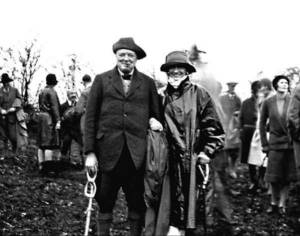
War
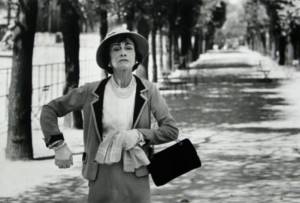
By the 40s, Gabrielle Chanel, whose photo you see in the article, had five stores on Rue Cambon in Paris. With the fascist occupation, they closed them all. During the war, she moved in Nazi circles, because only they could buy her goods then. But it should be noted that, having a commercial interest, she never thought about political revolutions. Towards the end of the war, arrests of collaborators began - Coco was also interrogated. They say that before entering the station she said: “If I’m gone for a long time, call Churchill.” She was not arrested, but for her association with the Nazis she was strongly advised to leave France. She could never forgive her Motherland for this. After spending 9 years of exile in Switzerland, Chanel bequeathed to be buried there.
Return to the world of fashion
She spends almost 10 years in the country of clean lakes, cheese and banks. When Dior, in the New Look show, returns wasp waists and petticoats to the catwalk (everything that Chanel struggled with), she is strengthened in her decision to return. They say that you cannot step into the same river twice. Chanel objects: “ If I want to do this, the river will have to return to its original place.”
71-year-old Gabrielle presents a new collection in 1954. The model show has been mercilessly criticized, with the Daily Mail calling the high-profile comeback a “fiasco.”
I do not care what you think of me. I don't think about you at all Coco Chanel
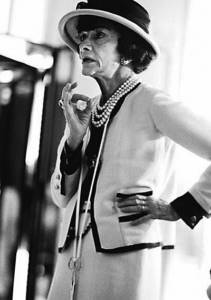
The designer did not offer anything new, but this is her secret - she does not create things for a “masquerade”. Her inventions - blouses, sweaters, cardigans, coats - you want to wear!
People can't innovate forever. I want to create Coco Chanel
The collection was received with a bang in America, and after three seasons Chanel achieved its former glory. A tweed suit from Mademoiselle - a narrow skirt and jacket, decorated with braid and patch pockets - becomes the calling card of a lady with good taste. Now for Agatha Christie, to determine the status of the heroine, it is enough to indicate “that lady in a Chanel suit.”
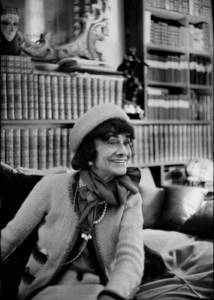
In February 1955, the designer presented the 2.55 rectangular handbag, named after its release date. Women appreciated the innovation of the reticule - a long chain for wearing on the shoulder.
Chanel's first client was herself: corsets did not suit her - she abolished this detail of the toilet, did not like floral scents - she created her own, forgot bags and clutches - she added a chain to the accessory.
Last days
Her morning began at the Ritz Hotel, where a makeup artist showed up at 9:00, armed with mascara and lipstick. A woman who did not use cosmetics, according to Chanel, had too high an opinion of herself.
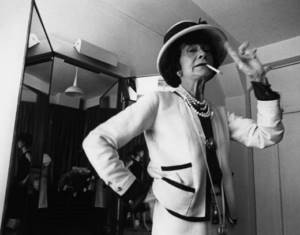
With an impeccable manicure and makeup, Coco “went out into the world”:
No one is young after forty, but we can be irresistible at any age.Coco Chanel
Until the end of her days, Chanel devoted herself to her favorite business. On January 10, 1971, Chanel dies of a heart attack.
She was buried in Lausanne (Switzerland), under the sign of a lion: five lion heads are depicted on the bas-relief on her grave.
